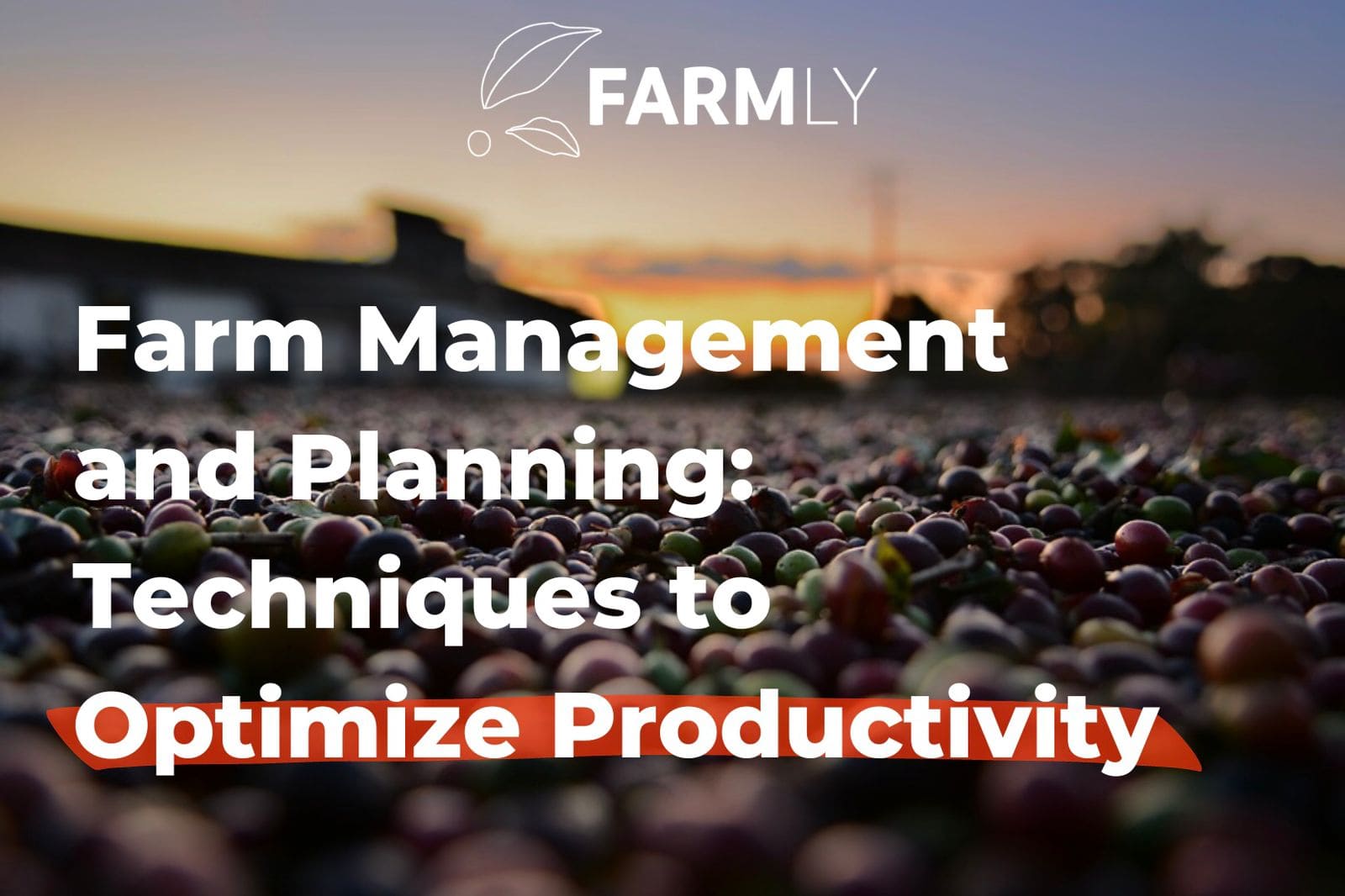Specialty coffee is a niche market that has been gaining more and more space, both in Brazil and worldwide. With unique characteristics of flavor and aroma, specialty coffee requires specific agricultural management and planning to ensure product quality and value.
In this blog post, we will present tools and techniques that can help you in this process.
Optimizing Farm Productivity: Understand the 7 Main Techniques
Several techniques can be applied to optimize the productivity and profit of specialty coffee-producing farms. Below, we present some of them.
1 – Soil Monitoring and Management
The soil is a determining factor in coffee quality and productivity. It is important to perform frequent soil analysis to identify its needs and apply the correct nutrients. In addition, it is important to do the proper management, including the correction of acidity and the addition of organic matter.
2 – Water Management
Water is essential for coffee growth, but it is important to use management techniques to avoid waste. Among the most used techniques are drip irrigation and the adoption of rainwater harvesting and storage systems.
3 – Integrated Management of Pests and Diseases
Pests and diseases can cause great losses on a coffee plantation. It is important to adopt integrated management techniques, which include the responsible use of chemical products and biological control.
Integrated management is a very important technique in coffee production, because it helps to reduce the damage caused by pests and diseases, ensuring the health and productivity of the plant, since it includes the responsible use of chemical products and biological control. In addition, this technique also helps to reduce production costs and environmental impacts, making coffee production more sustainable and responsible.
4 – Selection of Coffee Varieties
The choice of coffee variety to be planted is crucial for the success of the plantation. It is important to select varieties that are well adapted to the climate and soil of the region, and that present good productivity and bean quality.
5 – Harvest and Post Harvest
The harvest and post-harvest are critical moments for the quality of the coffee. It is important to use appropriate harvesting techniques, such as selective picking and stripping, and to adopt good post-harvest practices, such as correct drying and adequate storage.
6 – Financial and Cost Management
To optimize the farm’s profit, it is important to have efficient financial management and monitor the production costs. It is important to set clear financial goals and evaluate the results regularly.
7 – Investments in technology and innovation
The use of technology and innovation can help increase farm productivity and efficiency. Among the most used technologies are the use of drones for monitoring the crop, the use of sensors to monitor soil moisture, and the use of farm management software.
These are just some of the techniques that can be used to optimize the productivity and profit of coffee-producing farms. It is important to remember that each farm is unique and that it is necessary to adapt the techniques to the specific characteristics of each plantation.
Management and Planning: The 4 Most Useful Tools
Several tools can be useful for coffee farm management and planning, both to optimize productivity and increase process efficiency. Some of the most useful tools are:
1 – Farm Management Software
There are several specific softwares for farm management, which allow monitoring and controlling the entire production process of the farm, from planning to harvesting and commercialization of the coffee. These softwares also allow cost control, financial analysis, stock, and labor management.
2 – Productivity Maps
The use of yield maps can help identify areas of low productivity on the farm, allowing measures to be implemented to improve the productivity of these areas. These maps can be obtained from harvest data, satellite images, or drones.
3 – Climate Monitoring
Climate monitoring is essential for the management and planning of coffee farms since climate conditions have a major influence on farm productivity. There are several tools available to monitor weather conditions, including weather stations and weather forecast software.
4 – Stock Control and Logistics
Stock and logistics control are important to ensure that the necessary inputs for coffee production are available at the right time and in the right quantity. There are several management softwares and applications that allow the control of inputs and outputs, purchase planning, and transport management.
These are just some of the most useful tools for coffee farm management and planning. It is important to emphasize that the choice of the most appropriate tools will depend on the specific needs of each farm and that it is essential to count on specialized professionals to use these tools efficiently and safely.





